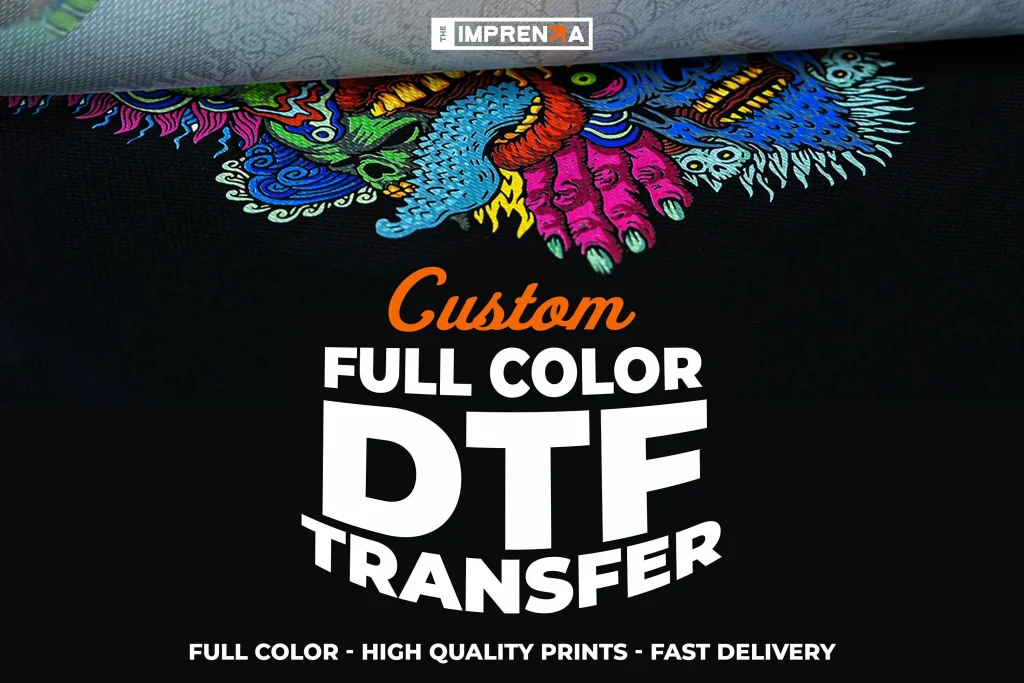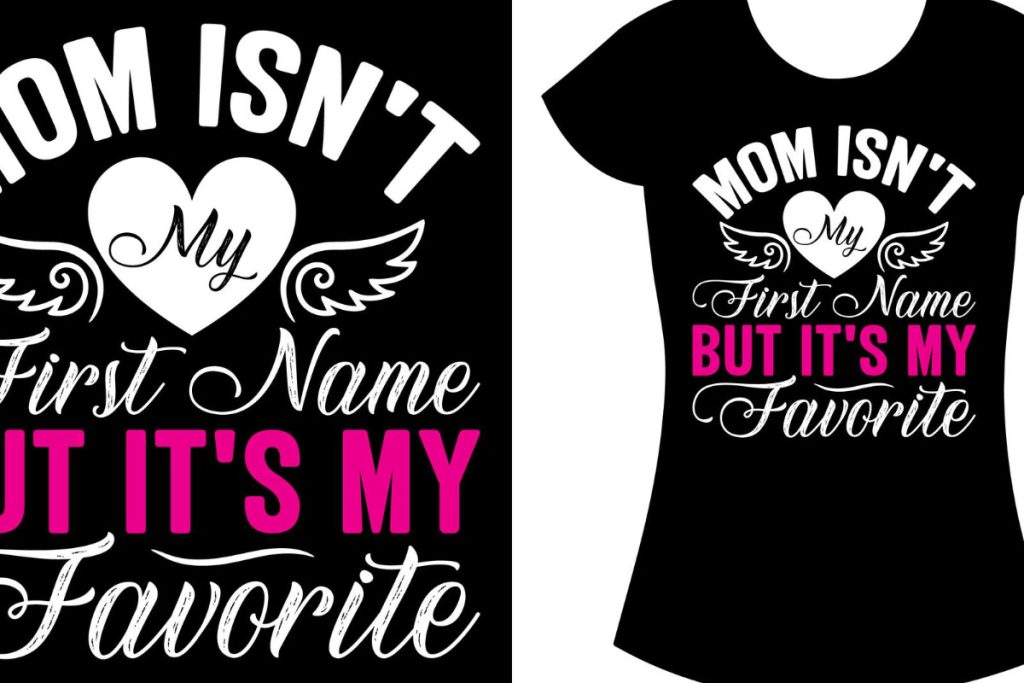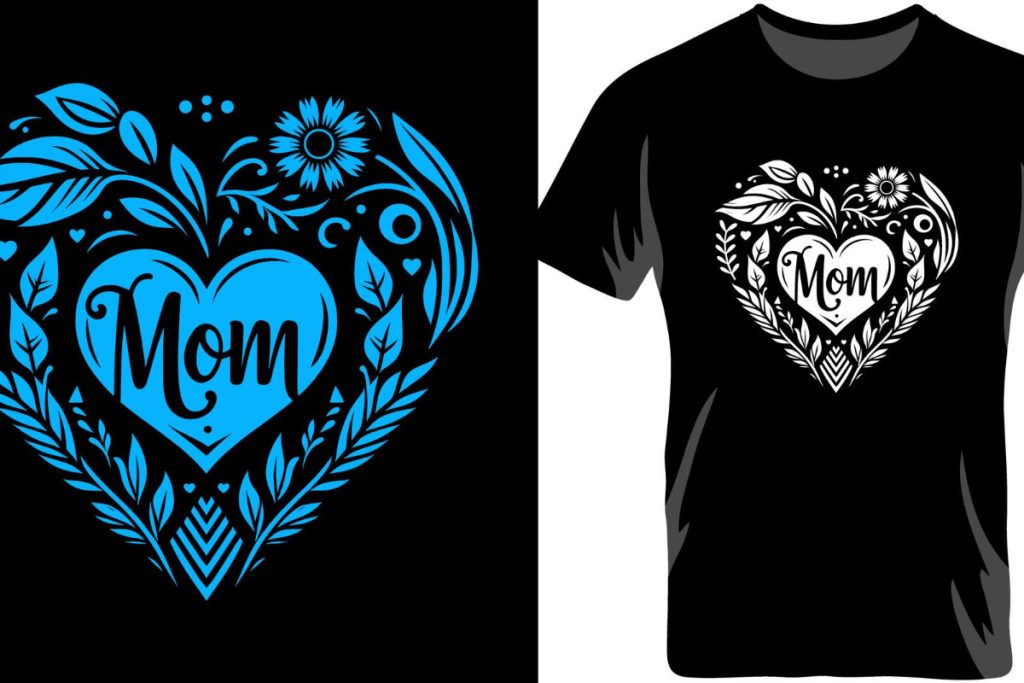DTF transfers, or Direct-to-Film transfers, are transforming the landscape of custom apparel printing and ushering in a new era of personalization and efficiency. This innovative printing method utilizes advanced DTF technology to print vibrant designs onto a special film that can be seamlessly transferred to various fabrics, including popular materials like cotton and polyester. The rise of DTF technology has garnered attention from both businesses and consumers due to its impressive versatility and ability to produce high-quality prints, making it a favored option in the competitive custom apparel market. As sustainable printing methods gain traction among environmentally conscious consumers, DTF printing’s reduced waste and efficient production processes further enhance its appeal. Join us as we explore the fascinating world of DTF transfers and discover why they are quickly becoming the go-to choice for apparel customization.
Direct-to-film (DTF) printing, also known as film transfer printing or heat transfer printing, has quickly gained popularity for its effectiveness in creating customized apparel solutions. This method allows for the direct printing of intricate designs onto a special film, which can then be applied to various garments using heat and pressure. With its ability to cater to diverse fabric types and deliver vibrant colors, DTF printing offers both quality and flexibility, addressing the growing demand for personalized clothing. As the market shifts toward innovative and sustainable printing strategies, options like DTF transfers represent a shift away from traditional methods, highlighting the need for businesses to embrace apparel customization technologies. Understanding these alternative concepts is crucial for anyone looking to stay ahead in the dynamic world of custom apparel manufacturing.
The Rise of Direct-to-Film (DTF) Transfers in Custom Apparel
In recent years, Direct-to-Film (DTF) transfers have taken the custom apparel printing industry by storm. This innovative technology allows for seamless integration of vibrant designs onto various fabrics, which is a game changer for small to medium-sized businesses. As e-commerce continues to gain traction, the ability to offer unique, customized products has become increasingly important for retailers looking to differentiate themselves in a crowded market. DTF printing not only enables shorter production runs but also caters to the growing consumer demand for personalized fashion, making it a highly sought-after method for custom apparel.
The growth of DTF transfers illustrates a significant shift in consumer preferences, focusing on customization and sustainability. With the versatility of DTF printing, businesses can easily adapt to changing trends without the hefty initial costs commonly associated with traditional printing methods. This adaptability allows for real-time responsiveness to consumer tastes, enabling brands to offer tailor-made apparel that resonates with their audience while maintaining cost-effectiveness.
Technological Advancements Driving DTF Printing Success
Advancements in DTF technology are paving the way for businesses to produce higher quality and faster turnaround times. Major manufacturers, including Epson and Roland, have introduced new DTF printers equipped with improved ink formulations and print technologies. These innovations not only enhance color vibrancy and detail but also significantly reduce printing times, allowing businesses to fulfill orders more efficiently. Such technological improvements reinforce the growing popularity of DTF printing, particularly among companies that prioritize quality and quick service in their product offerings.
Moreover, these advancements extend to software solutions that streamline the design process for apparel customization. By integrating user-friendly software with DTF printers, businesses can foster a more intuitive experience for customers and design teams alike. The combination of sophisticated equipment and cutting-edge design technology ensures that DTF printing remains at the forefront of the custom apparel market, meeting the complex demands of an increasingly digital consumer base.
The Environmental Benefits of DTF Printing
In an era where sustainability is paramount, DTF printing stands out as a responsible choice for custom apparel businesses. Traditional screen printing often results in considerable waste, from leftover inks to screens that cannot be reused. In contrast, DTF transfers minimize waste by using only the necessary inks for each design, making it a more eco-friendly option. This reduction in waste appeals to environmentally conscious consumers and aligns with the sustainable printing methods that many companies are striving to adopt.
Additionally, the energy efficiency associated with DTF technology contributes to its environmental advantages. As businesses shift towards practices that reduce their carbon footprint, DTF printing emerges as a solution that not only meets production needs but also promotes sustainability. Brands that prioritize eco-friendly practices stand to gain a competitive edge, attracting a segment of the market that is increasingly invested in sustainable fashion.
Market Trends Shaping the Future of DTF Transfers
The custom apparel market is poised for significant growth, with projections indicating a compound annual growth rate (CAGR) of over 7% from 2023 to 2030. This growth signals an expanding opportunity for technologies like DTF printing, particularly as the rise of e-commerce amplifies the demand for customizable products. Companies that embrace DTF transfers can leverage this trend, offering unique designs that cater to individual consumer preferences and bolster their position in the competitive apparel industry.
Furthermore, as consumer behavior shifts towards personalization, the ability to provide customized apparel through DTF printing can significantly enhance customer engagement and loyalty. Brands that quickly adapt to market trends by introducing personalized offerings enabled by DTF technology are likely to outperform competitors that rely solely on traditional printing methods. This responsiveness to consumer needs not only drives sales growth but also fosters a stronger connection between brands and their customers.
Quality and Durability: Hallmarks of DTF Printing
One of the standout features of Direct-to-Film printing is its unparalleled quality and durability. Unlike traditional methods such as heat transfer or direct-to-garment printing, DTF prints exhibit exceptional wash resistance and maintain their vibrant colors over time. This is particularly important in the custom apparel sector, where consumers expect high-quality products that withstand frequent use. By utilizing DTF technology, businesses can guarantee that their custom designs remain intact, establishing a reputation for excellence in the marketplace.
Moreover, the durability of DTF prints translates into long-lasting customer satisfaction. As brands prioritize quality in their offerings, they not only enhance their appeal but also reduce return rates associated with print failures. This reliability in product performance is a key advantage for companies in a competitive landscape where consumer expectations are continually rising. By adopting DTF printing, businesses position themselves as leaders in providing high-quality, long-lasting apparel.
Exploring the Future of Custom Apparel with DTF Technology
As the custom apparel world evolves, DTF technology represents a pivotal advancement that is reshaping the landscape. Its unique combination of efficiency, quality, and sustainability allows businesses to navigate the ever-changing demands of consumers effectively. With the focus on personalization becoming increasingly pronounced, the future of apparel customization is likely to hinge on the capabilities offered by DTF transfers. Companies that recognize this potential are poised to thrive in the dynamic market environment.
The recognition of DTF technology as a cornerstone for future success underscores the importance of keeping pace with technological advances and market shifts. As more businesses integrate DTF printing into their operations, the industry will continue to provide innovative, customized solutions that meet consumer demand. The continual adaptation and growth within DTF printing not only highlight its value in the current market but also set the stage for future innovations in custom apparel printing.
Frequently Asked Questions
What are DTF transfers and how do they differ from other printing methods?
DTF transfers, or Direct-to-Film transfers, involve printing designs onto a film that is then heat pressed onto fabric. Unlike traditional methods like screen printing, DTF technology allows for vibrant colors and fine details on various materials, making it a preferred choice for custom apparel printing. It offers advantages in versatility and quality, which sets it apart.
What materials can be used with DTF printing for custom apparel?
DTF printing is compatible with a wide range of materials, including cotton, polyester blends, and other fabric types. This versatility makes DTF transfers an ideal solution for custom apparel printing, allowing businesses to cater to diverse product offerings without compromising print quality.
How does DTF technology support sustainable printing methods?
DTF technology minimizes waste by only utilizing inks necessary for each specific print job, thereby reducing excess materials typically associated with traditional screen printing. This eco-friendly approach aligns with sustainable printing methods, appealing to consumers and brands focused on environmental responsibility.
What are the recent advancements in DTF printing technology?
Recent advancements in DTF printing technology include the introduction of high-quality inks and faster printers from manufacturers like Epson and Roland. These improvements enhance color vibrancy, print speeds, and overall image resolution, helping businesses meet the growing demand for high-quality custom apparel.
Why is DTF printing becoming the preferred choice for custom apparel businesses?
DTF printing is gaining popularity due to its cost-effectiveness, quality output, and capability for short production runs. This method is particularly attractive for small and medium-sized enterprises looking to fulfill custom orders quickly, making it a vital part of the apparel customization trend.
How does DTF transfer durability compare to other printing methods?
DTF transfers are known for their exceptional durability and wash resistance, often outperforming methods like heat transfer and direct-to-garment (DTG) printing. This durability ensures that custom apparel maintains its quality over time, providing brands with long-lasting merchandise.
| Key Point | Description |
|---|---|
| What are DTF Transfers? | Direct-to-Film (DTF) printing involves printing designs onto a film for transfer onto garments using heat and pressure. It is noted for its versatility and high-quality outcomes. |
| Advantages of DTF | DTF offers quality prints, versatility across fabrics, and cost-effectiveness due to lower setup needs compared to traditional methods, making it appealing for custom orders. |
| Recent Developments | DTF technology has seen increased adoption amongst SMEs, enhanced by advancements like improved printers from companies such as Epson, and a focus on sustainable printing practices. |
| Market Growth | The custom apparel market is projected to grow at a CAGR of over 7% from 2023 to 2030, with DTF printing being a leading player in this trend due to its efficiency. |
| Durability and Quality | DTF prints demonstrate exceptional durability and wash resistance compared to other methods, making them a favored choice among brands prioritizing high-quality merchandise. |
Summary
DTF transfers are revolutionizing the custom apparel printing landscape by offering a versatile, high-quality, and cost-effective solution. This innovative method has gained significant traction among businesses due to its capability to produce stunning prints on a variety of fabrics and its suitability for short production runs. As sustainability becomes increasingly important, DTF printing’s reduced waste compared to traditional methods presents a compelling reason for its adoption. The ongoing advancements in technology and rising consumer demand for personalized products position DTF transfers as a leading choice for the future of custom apparel. Embracing DTF technology is essential for businesses aspiring to succeed in this rapidly evolving market.



